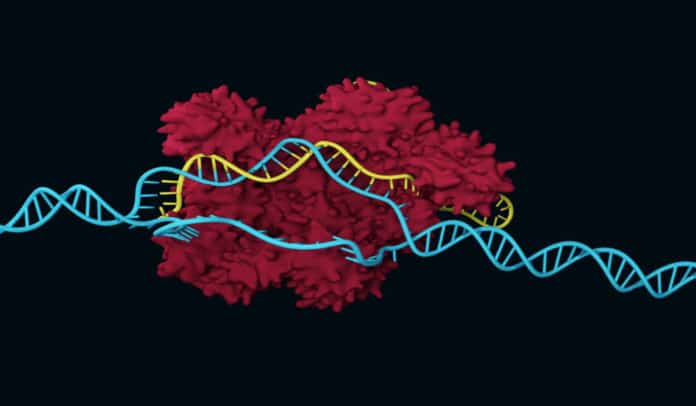CRISPR-Cas3-system for Targeted Genome Editing: UCSF Researchers
A new CRISPR tool that uses Cas3 to eliminate larger than normal stretches of DNA precisely as and quickly has been developed by scientists from the University of California.
For the purpose of developing new treatments, gene modifying applications have concentrated on class 2 CRISPR systems that uses the enzymes Cas12a or Cas9. Other than that, new possibilities for large genomic deletions, such as targeted removal of gene clusters or entire genes are offered by CRISPR-associated complex for antiviral defense (Cascade)-Cas3 systems.
Generally, for generating small deletions with homologous repair templates, the most common form of CRISPR-Cas systems made use of are the type I systems. DNA is degraded processively (the ability of an enzyme to catalyze consecutive reactions) by Cas3 used in the Class I type I systems, which has a 3′-5′ single-strand DNA helicase-nuclease enzyme. To generate a CRISPR RNA (crRNA)-guided cascade surveillance complex that can recruit Cas3, three cas genes (cas5, cas8, cas7) are used in Type I-C CRISPR-Cas systems.
A Type I-C CRISPR system from Pseudomonas aeruginosa (PaeCas3c) was repurposed and optimized for heterologous and endogenous genome editing in four microbial species, by the University of California (UCSF) researchers in this new work. It was observed that surrounding a programmed target site, the system led to deletions ranging from 7-424 kilobases with almost 100% effectiveness. Additionally, in producing large specific deletions, cascade-Cas3 targeting performed better than Cas9. Cascade-Cas3 machinery’s ability to efficiently degrade entire genomes was observed by the researchers.
Associate professor in the Department of Microbiology and Immunology in the UCSF, and the principal investigator, Joseph Bondy-Denomy Ph.D. said, “Cas3 is like Cas9 with a motor — like a Pac-Man, it runs on DNA and chews it up once it finds its specific DNA target.”
According to the researchers, the importance of genomic regions having DNA sequences of indeterminate function can be assessed more effectively with the help of this tool. Additionally, during the development of protein-based or small molecule therapeutics, scientists will be enabled to more conveniently remove useless or potentially pathogenic DNA from these cells using CRISPR-Cas3. Even in human gene therapy applications, agricultural, or industrial, this tool could be utilized for various purposes.
The CRISPR-Cas3 system should produce huge deletions within defined limits in order to be utilized in functional genomics. In addition, Cas3 has the ability to be recombinogenic through exposed single-stranded DNA generation. In the study, it was possible for the researcher to precisely set the boundaries of these large DNA repairs by manipulating the sequences of DNA provided to bacteria for homology-directed repair of the deletions. This shows that the deletions that are presently not achievable using various other CRISPR approaches can be achieved by this, as it shows that cascade-Cas3 is capable of genome-scale deletions.
The scientists created a pCas3cRh vector that carried the I-C specific crRNA with an altered repeat sequence, cas3, cas5, cas8, and cas7 in order to enable expression of the system in other hosts. Around 95-100 percent of survivors being modified was resulted by the induction of the targeting crRNAs.
Consequently, the researchers used the vector to target lacZ in Escherichia coli, where whole-genome sequencing disclosed bidirectional deletions ranging from 17 to 109 kilobases surrounding the area that was selected. Three distinct applications were achieved by the team in Pseudomonas syringae: multiplexed targeting, single-step deletion of large virulence regions, and plasmid curing. The usefulness of Cas3 editing in Klebsiella pneumoniae was also seen.
Bondy-Denomy said, “Around 10 times as numerous bacterial species make use of a Cas3 system as utilizing a Cas9 system, and in nature, one of the most common CRISPR systems is the CRISPR-Cas3 system. In the genetics world, non-model microbes have not been researched largely, and in order to study them, there is a substantial requirement for newer tools.”
Source
CRISPR-Cas3-system for Targeted Genome Editing: UCSF Researchers



